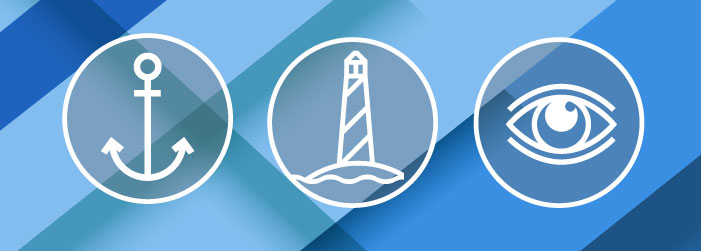Four Basic Strategies to Improve Hemispatial Neglect

A common problem for people who have a right hemisphere stroke is left-sided unilateral inattention.2 Left unilateral inattention is reduced processing of information from the left side of the body and environment.3 Unilateral inattention is also referred to as hemispatial neglect, although there is no intentional neglect on the part of the person. Just to complicate the problem, most people will initially have no idea that they have a unilateral inattention.1 Compassionate feedback will help people become more aware of the problem.
In the course titled Assessment and Treatment of Right Hemisphere Stoke Issues, Dr. Martha Burns explains some strategies that can be taught to a person to help compensate for deficits in hemispatial neglect and improve daily function. Those strategies can be categorized into 4 areas including anchors, guides, turns, and lighthouse.
1. Anchors
Anchors are the strategy of using a target to visually seek on the left side. Bright lines can be drawn down the left side of a paper. Bright post-it notes may be stuck to the left side of a computer screen. Edges of tables or walls can be used in the environment. The person is taught to return his or her eyes to that target to assist with scanning to the left.
2. Guides
Guides are the strategy of using an object or a finger to direct the eye toward the information that is being processed. Notecards, folded pieces of paper, the right index finger, and eventually the left index finger can all be used to guide the eyes during functional tasks.
3. Turns
Turns include turning the eyes or head to the left side. Immediately following a right hemisphere stoke, a person with a left unilateral inattention will tend to turn his or her eyes and head toward the right side to center the vision in the middle of the perceived visual field. The person must be taught to turn to the other direction to assist with processing information from the left side.
4. Lighthouse
The lighthouse strategy combines the three strategies listed above to help the person scan, plan, and implement functional tasks. For example, as a person enters a room, he or she can pause at the doorway to anchor the visual attention to the left wall, scan the room using the hand as a guide, and turn the head and eyes to the left to process the layout of the room.
When training a person to use these strategies, the therapist should grade the functional activities. Start with simple, easy-to-accomplish tasks and gradually increase their length and complexity. For example, the therapist might start scanning or reading tasks with only a few lines that are in large font and gradually increase the difficulty by having the person read more lines with smaller font. The therapist may also grade the cues starting with maximum verbal cues and advancing to self-cuing for ultimate independence in daily functioning.
- Gianutsos, R. & Suchoff, I.B. (2002). Visual fields after brain injury: Management issues for the occupational therapist. In M. Scheiman (Ed.) Understanding and Managing Vision Deficits: A Guide for Occupational Therapists, 2nd ed. Thorofare, NJ: SLACK.
- Gillen, G. (2009). Cognitive and Perceptual Rehabilitation: Optimizing Function. St. Louis: Mosby.
- Zolton, B. (2007). Vision, Perception, and Cognition: A Manual for the Evaluation and Treatment of the Adult with Acquired Brain Injury, 4th ed. Thorofare, NJ: SLACK.

